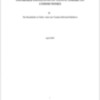Hi! I used to work with Native youth who are on juvenile probation. It was one of the most challenging yet rewarding experiences of my career. For positive outcomes, I found it was absolutely crucial to include community elders, leaders, and other family members in the assessment process and treatment planning stage (with Client consent, of course. But most often it was requested). I also invited the leaders to speak with me (confidentially, with releases of course, and typically in the presence of the youth) about mental health, what that looks like for me, and what that looks like for their tribe. I ask how they address trauma in their communities. I almost always included a cultural event such as a prayer circle as an intervention or goal. I had many leaders invite me to traditional ceremonies in order to learn about the group and be "accepted" by the tribe as an outside healer. It can be a wonderful corrective experience for the tribe as a whole when you participate in traditions.
I know its not typical to talk to so many people when treating one person, but I found that the historical trauma has caused so much distrust with the system, that it is not my decision how treatment happens. We really need to go at the child's pace, even if it means taking longer to write an assessment or tx plan that is not in line with funder deadlines.
One book I loved is: Through Indian Eyes: The Native Experience in Books for Children. Edited by Beverly Slapin and Doris Seale. It allows the reader to read leyendas, or traditional stories that often explain phenomena or provide historical context to the group's trauma.
I hope you enjoy the work as much as I did!



